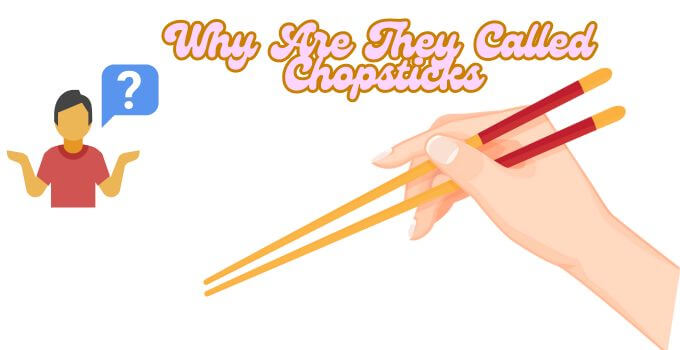
Chopsticks are among the most recognizable utensils in the world. Originating from Asia, their name, design, and usage are steeped in culture and history. But why are they called “chopsticks”? This question takes us back to their linguistic and cultural roots, and understanding this helps us appreciate their importance.
A Historical Overview of Chopsticks
Chopsticks were invented over 5,000 years ago in ancient China. Archaeological findings suggest they were initially used for cooking, as they helped handle hot food in boiling pots.
The earliest known chopsticks were made of bronze and were discovered in tombs from the Shang Dynasty (1200 BCE).
Over time, their use transitioned from cooking tools to everyday eating utensils during the Han Dynasty (206 BCE–220 CE).
The change likely occurred due to cultural and environmental shifts. Increased population density required more efficient cooking, favoring chopped, bite-sized food that cooked quickly and consumed less fuel. This change made chopsticks an ideal utensil for eating.
Why the Name “Chopsticks”?
Why Are They Called Chopsticks? The name “chopsticks” is derived from the Chinese Pidgin English word “chop,” meaning “quick.” This pidgin language developed during the 17th and 18th centuries when Western traders interacted with Chinese merchants.
The term “chop chop” was often used to mean “hurry up” or “quickly.”When English speakers encountered these utensils, they associated their efficient, swift use with the word “chop.” Combining “chop” with “sticks,” the name “chopsticks” was born.
While the Chinese word for chopsticks is kuàizi (筷子), the English term became widely popular through trade and cultural exchange.
Symbolism and Cultural Significance
Chopsticks are not just tools; they hold deep symbolic meanings across Asian cultures.
- Unity and Harmony: Chopsticks always come in pairs, symbolizing partnership and balance. This duality reflects harmony in relationships and family life.
- Respect at the Table: Using chopsticks correctly is a sign of good manners and respect in many cultures. Misusing them—such as pointing or sticking them upright in rice—is considered impolite or even offensive.
- Simplicity and Elegance: Their minimalist design mirrors the importance of simplicity and functionality in Asian philosophy.
Regional Variations
Chopsticks vary in design across countries, reflecting local traditions and culinary needs.
- China: Chinese chopsticks are long (about 25–30 cm) and typically made of wood or bamboo. Their length is practical for shared dishes, allowing diners to reach food on large plates.
- Japan: Japanese chopsticks are shorter and often more tapered at the end. They are designed for precision, suitable for delicacies like sushi and sashimi. Many are lacquered, showcasing intricate designs.
- Korea: Korean chopsticks are unique as they are made of metal, often stainless steel. This material was historically linked to hygiene and royalty. Paired with flat, metal spoons, they are used for soups and side dishes.
- Vietnam and Thailand: Chopsticks in these regions are generally made of bamboo and are often used alongside spoons, especially for dishes like pho or noodle soups.
Related Topic: Do Vietnamese Use Chopsticks
Practical Design and Adaptation
Chopsticks are designed for versatility. Their slender, lightweight build allows users to pick up both delicate and heavy food items. The tapered tips offer precision, while the broader end provides a firm grip.
Using chopsticks encourages mindful eating. Unlike spoons or forks, they require focus and coordination. This practice slows down the eating process, promoting better digestion and appreciation of meals.
The Spread of Chopsticks to the West
Chopsticks have transcended their Asian origins, becoming a global dining tool. Their introduction to the West came through immigration and the growing popularity of Asian cuisine. Today, they are widely used in restaurants serving Chinese, Japanese, Korean, and Vietnamese food.
Beyond functionality, chopsticks have become cultural symbols in the West. They are often associated with sophistication and the enjoyment of authentic Asian experiences.
Modern-Day Chopsticks
Chopsticks today come in various materials, catering to modern needs. Popular options include:
- Wood and Bamboo: Traditional and biodegradable.
- Metal: Durable and hygienic.
- Plastic: Lightweight but less eco-friendly.
- Disposable Chopsticks: Convenient but harmful to forests.
- Innovative Designs: Reusable chopsticks with built-in holders or collapsible options for portability.
The market for chopsticks has also expanded into artistic realms. Handmade or intricately designed chopsticks are sold as gifts or collectibles.
Global Cultural Influence
Chopsticks are now part of global dining culture. Non-Asian countries often offer chopsticks in restaurants to complement dishes like sushi or stir-fried noodles. This integration reflects the growing appreciation for Asian traditions and cuisines worldwide.
Interesting Facts About Chopsticks
- Longest Chopsticks: The longest chopsticks ever made were over 8 meters long, displayed in Japan.
- Chopstick Etiquette: Leaving chopsticks upright in rice is a funeral ritual in Japan.
- Fast Eating: Using chopsticks may help control portion sizes, promoting healthier eating habits.
- Chopstick Innovations: There are chopsticks with built-in LED lights and even Bluetooth capabilities.
Final Thoughts
Chopsticks are far more than eating utensils. They are a reflection of history, culture, and tradition. Their name, rooted in the concept of speed and efficiency, highlights their practical design.
From their origins in ancient China to their widespread global use, chopsticks continue to connect people with the culinary traditions of Asia.
By embracing their sustainable options and cultural significance, we ensure their legacy remains strong for generations to come.
Leave a Reply